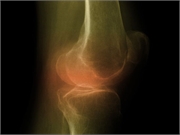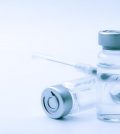- Common Chemicals in Plastics May Harm Baby Brain Development
- Trump Administration Orders More Cuts to CDC Budget
- FDA Delays Final Approval of Novavax COVID Vaccine
- Medicaid Expansion Protected Americans During COVID-19 Pandemic
- Antidepressants Linked To Sudden Cardiac Death
- Discrimination Dramatically Increases Risk for Depression, Anxiety
- New Blood Test Can Diagnose, Track Alzheimer’s Disease
- Bedsores More Likely In Short-Staffed Hospitals Leaning On Nurse OT, Travel Nurses
- Lifestyle Changes Boost Longevity For Cancer Survivors
- Longtime Head of 9/11 Health Program Let Go Amid Federal Job Cuts
An Unexpected Finding on What Might Drive Joint Disease

High levels of a protein that lubricates the knee joint may actually be a harbinger of impending joint disease, a surprising animal study suggests.
The researchers looked at the role of the protein, known as lubricin, in anterior cruciate ligament (ACL) injuries in dogs because it may also be involved in similar injuries in humans.
“Lubricin is crucial for normal joint function and the lubrication of cartilage,” said researcher Heidi Reesink, an assistant professor in equine health at the College of Veterinary Medicine at Cornell University. “We know that if a person or animal doesn’t make that protein, they will develop devastating joint disease affecting all the major weight-bearing joints.”
But Reesink found that in dogs that suffered a ligament tear in the knee, lubricin levels increased within the joint, which is the opposite of the conventional assumptions. “The dogma in this field has been that lubricin decreases in joint disease,” Reesink said in a university news release.
The researchers found that in three dogs, lubricin increased in the time between the initial injury but before any signs of arthritis.
“This indicates that the presence of increased lubricin might actually be a biomarker for predicting future osteoarthritis,” Reesink said. “We also saw increased lubricin in dogs months to years after they injured their ACLs, suggesting that lubricin might be an indicator of ongoing joint instability.
“In looking at horses and dogs, we’re seeing the same pattern,” Reesink said. “The strongest piece of data would be to show it in humans as well.” However, findings in animal studies don’t always translate to humans.
Increased lubricin could become a signal for doctors to intervene or try a different treatment, she added.
The study was published recently in the journal Scientific Reports.
More information
For more on ACL injuries, see the American Academy of Orthopedic Surgeons.
Source: HealthDay
Copyright © 2025 HealthDay. All rights reserved.









